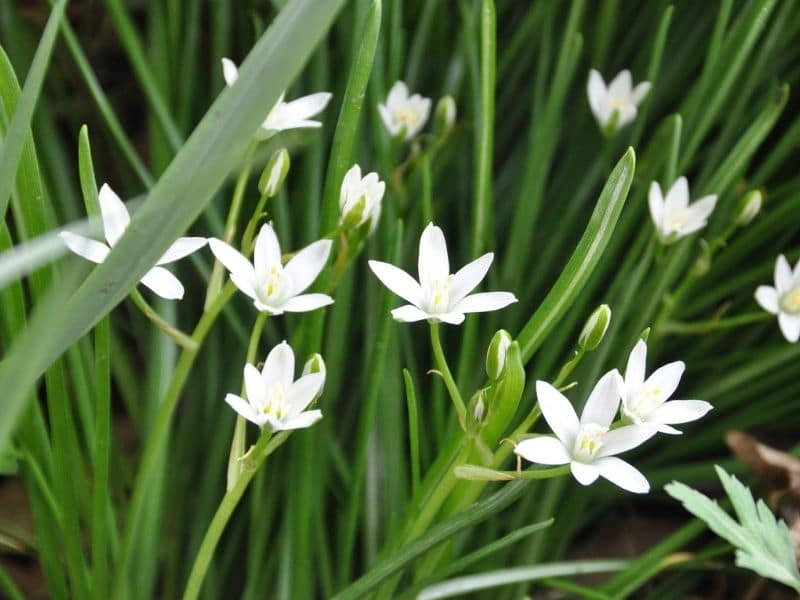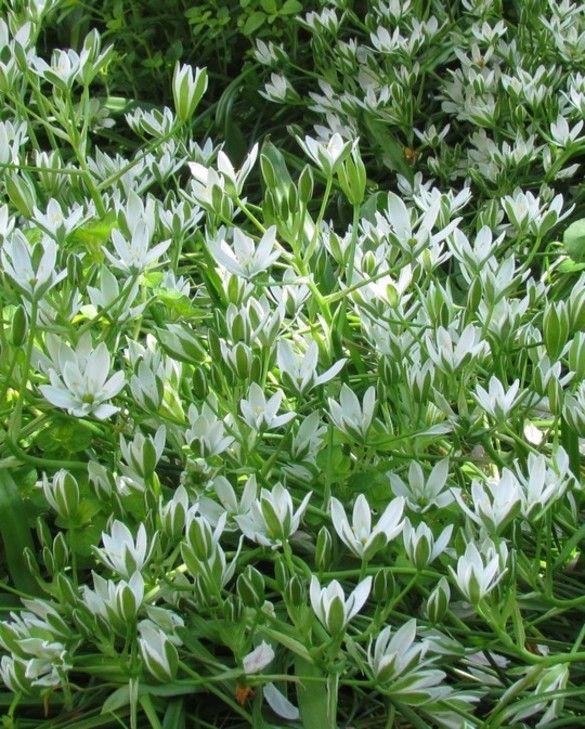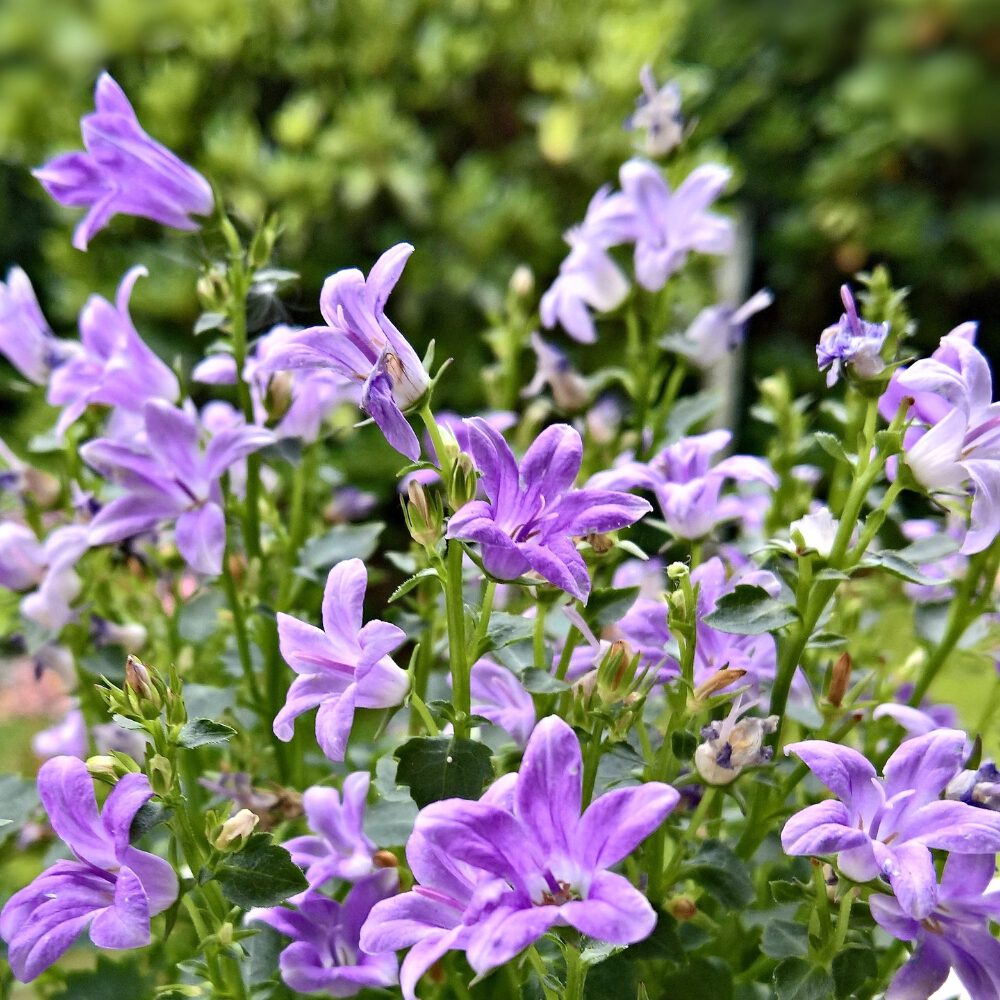
Witte Ster Van Bethlehem Bloem Stock Foto Image of nave, naughty 115354786
If you do decide to plant Star of Bethlehem, the best time to do so is in the fall. Plant your flower bulbs about two inches apart at a depth of five inches to the bulb's base. Unless you are planting in a container, a good way to address this plant's semi-invasive nature is to plant the bulbs in an area that is lined and edged so the bulbs.

Ornithogalumumbellatum, De Tuin StervanBethlehem, Met Bloesems Stock Afbeelding Image of
The Star of Bethlehem flower ( Ornithogalum umbellatum) is a perennial flowering bulb native to Western and Central Europe that blooms in late spring. Flowers have six white star-like petals with a green stripe on the underside. The small, thumb-sized flowers are very symbolic in many Christian cultures. This plant reproduces through bulb.

Ster van Bethlehem Plants, Bethlehem, Jerusalem
Botanical Profile. The star of Bethlehem plant typically grows to a height of 12-18 inches and spreads to a width of 6-12 inches. The flowers bloom in the spring and have a sweet fragrance that attracts bees and other pollinators. The plant requires full sun to partial shade and well-draining soil to thrive.

Star of Bethlehem Flower Meaning and Symbolism
Ster van Bethlehem. Haal de lente in huis met de kamerplant Campanula. Campanula betekent in het Latijns 'klokje'. En het is ook redelijk goed te zien waarom de woonplant deze naam heeft gekregen. Planttype: Eenjarige, Perkplant, Bloeiende kamerplant. Standplaats: halfzon, zon.

Ornithogalum Umbellatum (Ster van Bethlehem)
Use a Slow-Release Fertilizer. Add 1 1/2 tablespoons of slow-release fertilizer per 12 inches of diameter and work it into the top 1 inch of soil. Fertilize star of Bethlehem once when the flowers start blooming. Water immediately after applying the fertilizer to thoroughly moisten the soil to the bottom of the planter.
Yorkshire Buddings Star Of Bethlehem
This plant can take 25 percent shade, but grows best in full sun location. Star of Bethlehem flower bulbs should be planted about 2 inches (5 cm.) apart and at a depth of 5 inches (13 cm.) to the base of the bulb. To ward off invasive tendencies, plant in a buried container or an area that is lined and edged so that bulbs can only spread so far.

Vroege vogels Foto Planten Ster van Bethlehem
Water. Young Star of Bethlehem plants need regular watering to keep the soil evenly moist but not soggy. Mature plants have some tolerance for dry soil, but they still prefer a moderate amount of moisture. While the plant is actively growing in the spring and summer, water when the soil feels dry a couple inches down.

Vogelmelk, Ster van Bethlehem
Star of Bethlehem plant grow and care - herbaceous geophyte of the genus Ornithogalum also known as Star of Bethlehem flower, Star of Bethlehem plant perennial deciduous plant also used as ornamental cut flower fragrance plant, can grow in mediterranean, desert, subtropical or temperate climate and growing in hardiness zone 6-10 (possible to keep the bulb in the soil) 4-7 (possible to keep.

Ster van Bethlehem Flower Essence Etsy Nederland
With proper care and propagation techniques, your Star of Bethlehem plant should thrive! Star of Bethlehem is a stunning and popular plant that can be easily propagated through bulb division. Once the plant has finished blooming, gently dig up the bulbs and separate them into smaller clusters. Be sure to handle the bulbs with care to avoid damage.
:max_bytes(150000):strip_icc()/star-of-bethlehem-plant-profile-4774326-03-1d8ea9f7835443abb3d5becb429c797f.jpg)
Star of Bethlehem Plant Care & Growing Guide
The Star of Bethlehem flower is grown from bulbs. Plant the small bulbs 3 to 4 inches deep. Plant them in the fall after the weather has cooled. Apply fertilizer or a general-purpose fertilizer at the planting site. The bulbs need a chilling period as part of their life cycle.

Star Of Bethlehem Flower Database Plants
Bolgewas met fijn groen blad, witte sterbloemen in losse schermen, achterkant van de bloemslippen groen. Mooi plukbloemetje met fijne sprieterige blaadjes. Komt algemeen in het wild voor, met name in het rivierengebied en de duinen, vanaf de 16e eeuw als tuinplant en als stinzenplant in tuinen en parken. Houdt van voedselrijke wat vochtige leem.

Ornithogalum Umbellatum (Ster van Bethlehem)
Star of Bethlehem: origin and characteristics. The star of Bethlehem is a representative of the Ornithogalum genus (Ornithogalum), which in turn is assigned to the asparagus family (Asparagaceae).Ornithogalum can be literally translated as bird's milk, referring to the white sap that oozes from the plant when injured and which can cause rashes and irritation on the skin.

Ornithogalum Umbellatum (Ster van Bethlehem)
Website. www .bergianska .se /english /. The Bergianska trädgården, the Bergian Garden or Hortus Bergianus, is a botanical garden located in the Frescati area on the outskirts of Stockholm, close to the Swedish Museum of Natural History and the main campus of Stockholm University. The director of the garden is known as Professor Bergianus .
:max_bytes(150000):strip_icc()/star-of-bethlehem-plant-profile-4774326-05-8d86f504563447918acad18dfcaeff34.jpg)
Star of Bethlehem Plant Care & Growing Guide
The star of Bethlehem spreads naturally, and the bulbs will grow into clusters 6 inches wide. The Star of Bethlehem plant has many nicknames, including grass lily, bird's milk, nap-at-noon, and eleven o'clock lady. There are over 200 species of Star of Bethlehem flower native to the Mediterranean region of Europe, western Asia, and Africa.

La Flor de Bach Star of Bethlehem o Estrella de Belén
Star of Bethlehem (Campanula isophylla) is a trailing perennial, flowering plant. It can grow up to 6 - 8 inches tall and 12 inches wide. It has bright green, heart-shaped, toothed leaves. The green stems tumble down the sides of pots. If stems or leaf stalks are broken they ooze a milky white sap with a distinctive, but not unpleasant, scent.

Ster van Bethlehem Pokon Groen doet je goed
Star-of-Bethlehem is a bulbous perennial emerging in the early spring and maturing in late spring (Figure 1) that is classified as a monocot in the lily family. The plant (including bulbs) is poisonous if ingested by humans or livestock. Figure 1. Thick clumps of bulbs, the primary means by which star-of-Bethlehem reproduces and spreads. Figure 2.